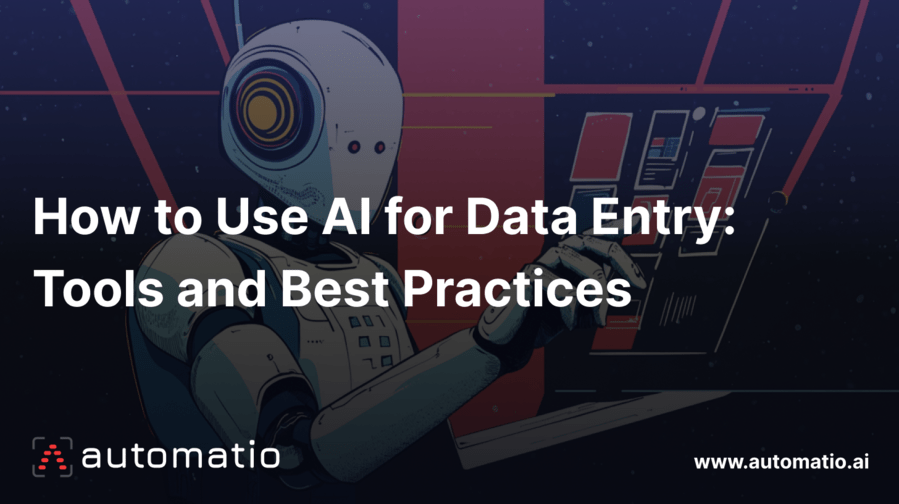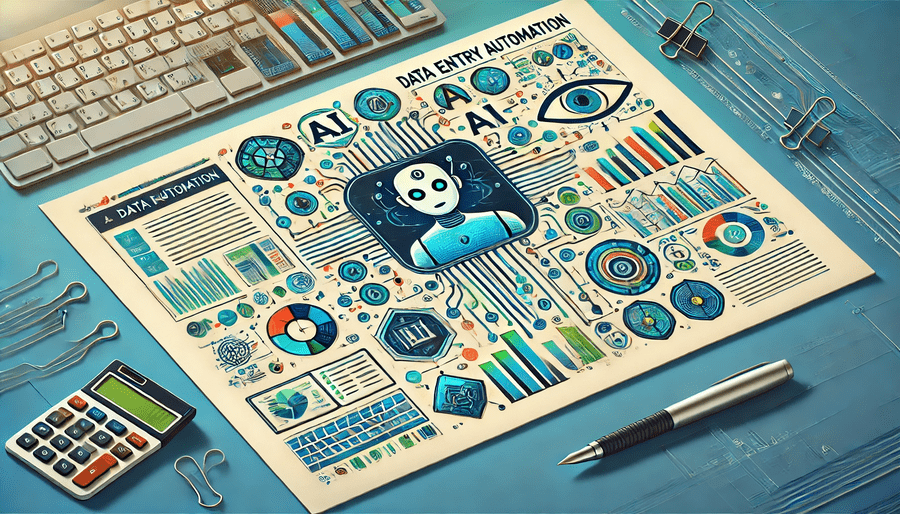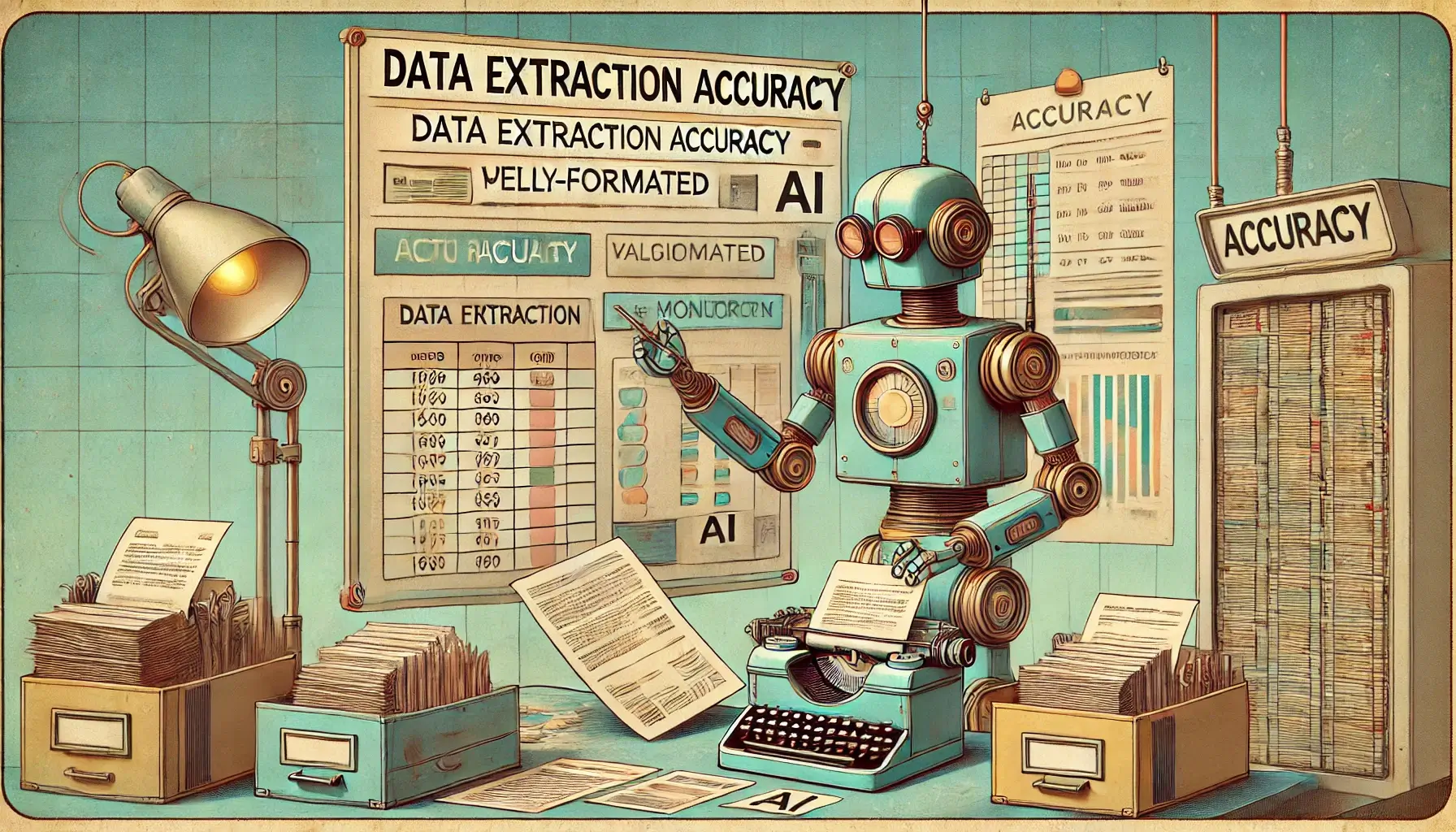How to Use AI for Data Entry: Tools and Best Practices
Learn best practices for implementation and explore future trends in AI data entry. This article highlights the best AI tools for data entry, real-life examples, and tips for choosing the right tool.

Introduction: What Is AI Data Entry?
Data entry isn’t exactly thrilling, is it? It often feels like an endless cycle of copying, pasting, and typing—tasks that waste time and can lead to mistakes. But here’s the bright side: AI data entry. With AI-powered tools, businesses can automate the boring parts of data entry, allowing teams to focus on more important and creative tasks.
Imagine how much simpler things would be if you could automate processing invoices, pulling information from PDFs, or updating spreadsheets in real time. AI does the data entry automation, handling data with accuracy and speed. It’s like having a reliable assistant who never tires and doesn’t need coffee breaks.
Why Use AI for Data Entry?

AI is becoming essential for businesses that manage large amounts of data. According to the World Economic Forum research, AI technologies are expected to create more jobs than they displace, allowing employees to focus on more valuable tasks. This means that as AI takes over repetitive tasks like data entry, it frees up time for employees to engage in strategic work, benefiting both individuals and organizations. This shift can lead to increased productivity and overall satisfaction in the workplace.
Imagine using AI for data input so you don’t have to spend hours entering data for invoices or customer records. With a data entry bot, these tasks can be completed much faster and more accurately.
One major advantage of using AI for automated data entry is that it reduces mistakes. When people enter data manually, errors happen often. AI tools can take information from various sources, like emails and scanned documents, and put it directly where it needs to go.
Practical Examples of AI-Powered Data Entry

Here are some practical examples of how to automate data entry and improve efficiency:
- Invoice Processing: AI automates the extraction of key details from invoices—such as vendor names, amounts owed, and due dates—using automated data input techniques.
- Customer Data Management: With AI data entry software, businesses can collect customer information from web forms and emails, directly inputting it into customer management systems.
- Survey Data Collection: AI speeds up the process of gathering survey responses by organizing them into databases through data entry automation tools.
- Document Digitization: For businesses still relying on paper, AI can convert physical documents into digital formats, enhancing the automated data entry system.
- Healthcare Data Entry: AI automates data entry from medical forms, including handwritten records.
- Web Scraping Tasks: Businesses can automate tasks like clicking buttons on websites or extracting product details from online stores. For example, using an instant data scraper can quickly gather information, making it easier to compile and analyze data for business decisions.
- E-commerce Inventory Management: AI can automate the tracking and updating of product inventories. When stock levels change, the system can automatically update databases and notify stakeholders.
- Lead Generation: Businesses can use AI to scrape potential customer information from various online sources.
- Social Media Monitoring: AI tools can gather and analyze data from social media platforms, tracking mentions, comments, and engagement metrics. This data can then be compiled into reports to help businesses understand their online presence and customer sentiment.
- Event Registration Management: For events and webinars, AI can automate the collection of attendee information. By integrating registration forms with databases, the system can instantly input participant data, send confirmation emails, and generate attendee lists.
Best AI Tools for Automating Data Entry

Finding the right data entry AI tools can make a big difference in how your business operates. Here are some of the top options available:
- Automatio.ai: A web automation and data extraction tool for those looking to automate some data entry tasks. With Automatio, you can easily create bots that scrape data from websites, pulling in valuable information like product details, customer records, etc. Automatio can also input data, for example, using a form filling bot that can automatically populate data into forms or databases.
- Docparser.com: This tool specializes in extracting data from various document types, especially PDFs. Users can customize parsing rules, making it ideal for handling invoices and receipts while easily integrating with other applications.
- Rossum.ai: Known for its smart invoice processing, Rossum uses AI to extract and validate data from financial documents. Its ability to learn from past inputs makes it a great choice for businesses that manage large volumes of invoices.
- Klippa.com: This tool features strong OCR capabilities, allowing businesses to quickly digitize paper documents. It’s an excellent option for those transitioning away from manually entering data from physical receipts and invoices.
- Hyperscience.com: This tool automates data extraction from both handwritten and printed documents. Its advanced validation features help ensure that the data collected is accurate, which is vital for industries that rely on precise information.
- Google Document AI: Part of Google Cloud, this tool efficiently processes various document types. It’s particularly useful for businesses that need to convert unstructured data into usable formats, thanks to its seamless integration with Google Workspace. Additionally, when combined with web scraping tools, you can effortlessly send the extracted data to Google Sheets, making it easier to analyze and manage your information
How to Choose the Right AI Tool for Data Entry
Choosing the right AI data entry software is essential but can be straightforward. Start by identifying the specific types of data you handle most frequently, such as invoices or customer records. Focus on features that ease your tasks, like robust invoice parsing or Optical Character Recognition (OCR) for efficient data input. It’s also important to choose user-friendly software, especially if your team lacks technical expertise. Look for no-code or low-code options that allow anyone to get started easily without extensive training.
Additionally, ensure the software integrates well with your existing systems, such as CRMs or accounting platforms, to maintain efficiency. Seek data entry applications that offer comprehensive resources and responsive customer service to help you solve any challenges that come up.
What are the Best Practices for Implementing AI in Data Entry
Start small by automating a few online tasks, allowing your team to adjust and address any issues before scaling up. Set clear goals for what you want to achieve—whether it's speeding up processes or improving accuracy—so you can measure success effectively. Involve your employees in the transition, as their insights are crucial for successful adoption.
Regularly monitor the performance of the AI tools you implement. Gather user feedback to identify what works and what needs adjustment. Continuous training is essential to keep your team updated on new features and maximize the benefits of the technology. Prioritize data quality to avoid issues from poor input, and ensure your data entry platform complies with privacy regulations to protect sensitive information and build customer trust.
Overcoming Challenges in AI Data Entry Automation

Implementing AI in data entry brings advantages, but it also comes with challenges that need to be addressed.
For instance, accuracy can suffer when dealing with poorly formatted documents or handwritten text, leading to errors. Regular monitoring and validation are essential to maintain data quality, as the effectiveness of AI often depends on the input data's quality. According to the article on AIMultiple, even the most sophisticated AI algorithms can produce flawed results if the input data is not accurate or reliable.
Initial setup and integration of AI tools can be tricky; businesses must invest time in customizing these tools to fit their workflows. Employee training is vital, as staff must learn to use AI tools effectively to maximize benefits and improve their data entry jobs. And when the setup becomes more complex or requires deeper refinements, a custom software agency can help improve the system for optimal performance.
Ensuring data privacy and security is also crucial, particularly when handling sensitive information. Companies should choose AI tools that comply with data protection regulations and implement strong security measures to safeguard against data breaches, maintaining customer trust while enhancing efficiency in AI data input jobs.
Conclusion: The Future of Data Entry with AI

As technology keeps evolving, there are some really exciting trends shaping the future of AI in data entry! According to Our World in Data, AI is already making a huge difference in our lives, influencing how we see and do things. With all the recent advancements and increased investments in AI, we can expect these ai data entry systems to get even more powerful in the coming years.
One intriguing possibility is that we might see human-level artificial intelligence developed within the next few decades! Imagine what that could mean for businesses—automating web tasks that once took up so much time.
In a nutshell, the future of data entry with AI is looking really bright. Applying these changes will not only help you improve how you manage data but also open up new opportunities for innovation and growth in your business.

